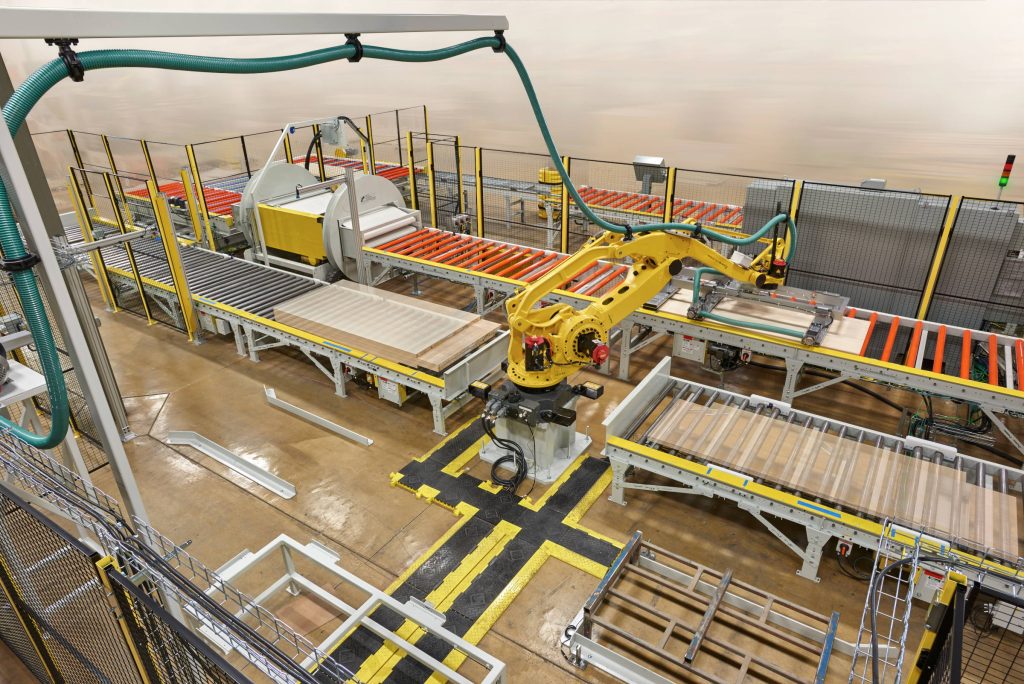Sanding Line Automation Cell
- Home
- Recent Projects
- Sanding Line Automation Cell

Project summary
MWES provided this manufacturer with a robot and a conveyor system that tends an industrial sander as part of a wood door assembly line.
The Challenge
Operating a manufacturing line that handles various product sizes while using the same equipment is a challenge. In the past, a production line such as that would require a large workforce of manual labor to handle the product and separate complex conveyor lines to organize the incoming material. However, with robotic automation, that type of production line can be drastically simplified. This is why a door manufacturing firm came to MWES looking to robotically automate a conveyor line that handled different-sized doors, organized them on the conveyors, and then prepared them for a sanding operation.
The Solution
MWES designed and built a robot automation cell that would take a stack of doors from an infeed conveyor, and move them one at a time onto a closed-loop processing conveyor. From there the door would make its first pass through an industrial sander, where once the sanding is complete, would be visually inspected by a worker. The door would make a second pass through the sander once it’s been flipped over at a rotation station. The robot then picks the completed doors off the closed-loop conveyor and places them on an outbound conveyor.
The sanding line operation begins when a skid with the stack of doors is placed on the infeed conveyor via a forklift. The stack of doors conveys into the robot work area where the Fanuc M410-iB-500 4-axis robot picks the door with a vacuum EOAT from the top of the stack and places it on the closed-loop sanding conveyor. A barcode on the door is then scanned in order to let the system know the specifications of the door being processed. It arrives at the rotation station, and on its first pass through the station, the station does not rotate the door. The door then moves to a transfer conveyor, where the conveyor reverses at intervals to randomize the entry into the sander.
Once the door has passed through the sander, the operator inspects the results. If the door fails the inspection, the operator presses the ‘Hold-Lift’ button and removes it from the production line. The accepted doors continue along on the conveyor and pass through the rotation station for a second time, where the door is rotated 180 degrees. Rotating the door allows the sander to sand the other side of the door after the door passes through a second time. The door is once again inspected by the operator for quality. After the sanding has been completed on both sides of the door, it conveys to the unload station where the robot moves the completed door to the outfeed conveyor.
Impact to the Customer
The door sanding line automation cell that MWES provided this firm, greatly increased their door production throughput. Utilizing a robot and conveyors, this once difficult manual operation can now be operated by one worker with basic operational training.
Midwest Engineered Systems has a wide range of experience in building robotically automated manufacturing cells. If you’re looking to improve your manufacturing throughput, we have the knowledge and experience to make the project a success.
Contact us to learn how Midwest Engineered Systems can automate even your most complex and challenging operations today!
Innovation Through Automation
Client Details
A manufacturer that specializes in residential and commercial wood doors.



